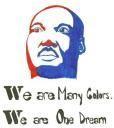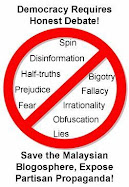
Hindus believe that dharma or righteousness is a central principle by which one lives a good life. We need to ensure that dharma overcomes adharma in ourselves, just as we strive to establish dharma in the world. Here the Supreme Being lends us a hand; as Sri Krishna says in what is possibly the most famous verse in the Bhagavad Gita:
Yada yada hi dharmasyaYou can listen to the verse in Sanskrit here:
Glanir bhavati bharata
Abhyutthanam adharmasya
Tadatmanam srjamy aham
- Bhagavad Gita (Chapter IV-7)
In English:
Whenever and wherever there is decay
of righteousness, O Bharata,
And a rise of unrighteousness
then I manifest Myself!
According to Wikipedia, Deepavali celebrates two such events when the Supreme Being manifest himself to reestablish righteousness in the Universe, as Sri Rama and Sri Krishna respectively:
- Return of Rama to Ayodhya: Diwali also celebrates the return of Rama, King of Ayodhya, with his wife Sita and brother Lakshmana to Ayodhya after a 14 year exile, and a war in which he killed Ravana. It is believed that the people of Ayodhya lit ghee lamps along the way to light their path in the darkness. Since Ram traveled from South India to his kingdom in North India, he passed through the south earlier. This is the reason why the festival is celebrated a day earlier in South India. Diwali usually comes 19 or 20 days after Dasara.
- The Killing of Narakasura: Celebrated as Narak Chaturdashi, one day before Diwali day, it commemorates the killing of Narakasura, an evil demon who created havoc, by Krishna's wife Satyabhama. This happened in the Dwapara Yuga during this time of Krishna's avatar. In another version, the demon was killed by Krishna.
The third Sikh Guru Amar Das started Diwali celebrations by motivating all Sikhs to come together on this day and seek the blessings of the Guru at Goindwal. Another event that marks this festival is that the foundation stone of The Golden Temple at Amritsar was laid on Diwali.The significance of Deepavali in Jainism (from here):
Even though the Sikhs were celebrating Diwali since a long time, its significance increased historically when their revered Guru Hargobind Sahib was released from prison on this day at Gwalior. Hence, Diwali is celebrated as “Bandi Chhorh Diwas”/day of freedom by Sikhs. Emperor Jahangir imprisoned Guru Hargobind Sahib along with 52 other Hindu kings at Gwalior fort as political prisoners. The people pleaded for the release of their Guru and it was granted in October 1619. But, the Guru asked the emperor to release all the other kings along with him, to which he agreed. After the release, the Guru went straight to the Golden Temple at Amritsar and to welcome him there were hundreds of lamps lit in the temple.
During the festival people prepare sweets at home and devotees float multi-colored light candles on the water body around the Golden Temple. Here a grand fireworks display is held in the evening. Sikhs take out Nagar keertan/street procession during Diwali and Akhand paath or nonstop reading of Guru Granth Sahib is held as part of the celebrations. Joyful melas/fairs are also held.
Diwali is celebrated by Jains with devotion, on this day Lord Mahavira the 24th Thirthankara achieved Nirvana on Amavasya of Ashvina masa in 527 B.C. The Lord left the body and achieved Mukti/liberation in Pavapuri, Bihar. Lighting of lamps on this day acknowledges Lord Mahavira’s preaching and knowledge.The significance of Deepavali in Buddhism (from here):
Jains fast on these three days and recite sacred hymns and meditate. They also listen to Uttaradhyavan Sutra, which is the final preaching of Lord Mahavira.
Houses will be elaborately and beautifully decorated with lamps and lights. They also worship Goddess Lakshmi on Amavasya and businessmen open new account. Sweets and savories are prepared and distributed to friends and relatives.
Buddhists especially Newar Buddhists celebrate Diwali in their quiet way. They chant the mantras and remember Emperor Ashoka who converted to Buddhism on this day. Hence the Buddhists also know the festival as Ashok Vijayadashami. Their temples and monasteries are well decorated during this time and the Buddha is worshiped with full honors.In Malaysia, this is how Hindus celebrate Deepavali (from here):
In anticipation of the celebration, homes as well as their surrounding areas are cleaned from top to bottom; decorative designs such as the kolam are drawn or placed on floors and walls; and the glow of lights, whether emitted from the traditional vilakku (oil lamps fashioned out of clay) or colourful electric bulbs, brighten up the abode of both rich and poor, signalling the coming festivities.Yesterday, Barack Obama became the first American President to personally celebrate Deepavali.
Bank of Commerce staff completing their kolam design
Temples are similarly spruced up with flowers and offerings of fruits and coconut milk from devotees, becoming more abundant and pronounced as the big day draws closer.
The spring cleaning and decorating are significant for they not only symbolise renewal but also prepare for the welcoming of Devi Lakshmi, the goddess of Wealth and Prosperity, who is believed to visit homes and temples on the day. It is said she emerged from the churning ocean only days after the new moon of Deepavali.
Besides the cleaning of homes and temples, Hindus also prepare themselves by cleansing their bodies and minds. Many among the devout fast, or observe a strict vegetarian diet, and spend hours during the preceding weeks in prayer and meditation.
The eve is usually spent making last-minute preparations for the next day. This is also the time when past quarrels are forgotten, and forgiveness is extended and granted.
On Deepavali morning, many Hindu devotees awaken before sunrise for the ritual oil bath. For some it is a symbolic affair (to signify purity) while others take full oil baths to remove impurities externally, as well as tone the muscles and nerves to receive positive energies. Then it's straight to the temples where prayers are held in accordance with the ceremonial rites.
The rest of the day is taken up by receiving guests, as is customary here in Malaysia. Most devout Hindus tend to be vegetarian, but that doesn't change the fact that Deepavali is the day to savour the many delicious Indian delicacies such as sweetmeats, rice puddings and the ever-popular murukku.

Asatoma SadgamayaIn English:
Thamaso Maa Jyothir Gamaya
Mrithyor Maa Amrutham Gamaya
Lead me from Untruth to Truth.Deepavali valthukkal to all! May the Light shine on us, in us and from us!
Lead me from darkness to light.
Lead me from death to immortality.
Sincerely,
Malaysian Heart
P.S. You can learn more about Hinduism here and here. You can read an English translation of the Bhagavad Gita here.






















No comments:
Post a Comment
How to Paste Text into Comment Boxes
Google seems to have disabled pasting text (including ctrl-v) into blogger comments boxes in Firefox. The good news is that:
1. You can still copy paste using Internet Explorer (I successfully tried it with IE7)
2. With Firefox, you can still "Drag and Drop" text into the comment form. I have successfully dragged and dropped text from MS Word, websites (HTML) and from ScribeFire (plain text and HTML). Just do the following:
a) reduce the size of the window you want to take the text from, and place it near the comment box
b) Highlight the required text with cursor
c) Click on the highlighted text and drag it over to the comment box and drop it there.
Happy commenting!